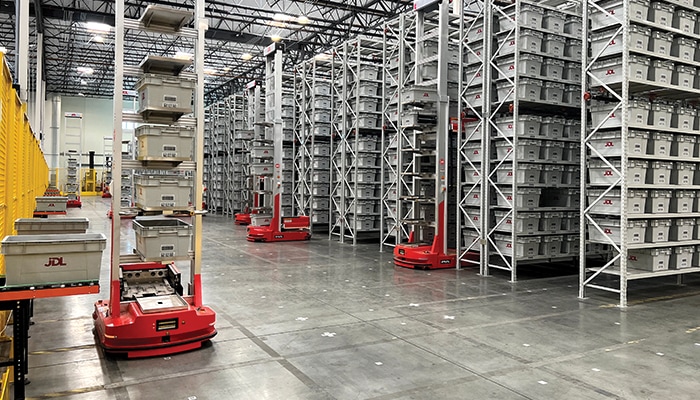How Automation Can Expand Your Site Selection Options

By reducing the need to locate your warehouse or DC close to a population center, automation can lead to efficiency gains and cost savings at a new site.
Labor is the driving force for much of the decision-making in the supply chain space today—particularly in the site selection process. When we think about labor and site selection, we typically think about what is happening inside the warehouse. If I can’t hire people to fill those warehouse positions, then how can I get my product in and out the door? Although that’s the most common challenge presented by labor, it’s also the easiest to solve. The solution is automation.
Traditionally, site selection criteria have focused on freight costs, real estate costs, and proximity to population centers for access to labor. In recent years, the labor piece of the equation has loomed large as the competition for workers has intensified. Automation, particularly automated storage and retrieval systems (ASRS), has the power to remove that labor consideration from the conversation, giving organizations invaluable flexibility.
Addressing Automation Earlier
Most warehouse and distribution center facilities open with mid to low levels of automation and then gradually become more automated over time. At the outset, they must factor labor heavily into their site selection consideration, absorbing higher real estate costs to locate closer to population centers.
Today’s organizations, however, should weigh whether to speed that automation journey up. In particular, they should ask: If we invest more in automation from the outset, does that lead to significant savings on the location that we choose?
Historically, many organizations have planned their network with automation in the back of their minds. The approach is, “Let’s get the DC up and running and then we’ll automate to save on our annual operating expenses.” When you make automation part of your initial decision-making, it might require more time and investment in the planning process, but you can save a substantial amount in the long run.
Finding the Right Fit
ASRS encompasses a variety of solutions, ranging from very high throughput systems with massive efficiency gains to more flexible and cost-effective systems. The size of an operation, the location of the operation, and the extent of the labor constraint can all play a role in which tier of ASRS is the best fit.
Organizations engaged in site selection should enlist the help of third-party automation experts to evaluate their ASRS options. These experts can determine the true value of automation to your operation and the cost savings and efficiency it can bring, while helping you wade through the many ASRS solutions available.
A Forward-Thinking Solution
Automation’s flexibility is invaluable when you look toward an uncertain future. Those who study the labor market do not see it improving in the years ahead. Meanwhile, warehouses and DCs are facing growing demand to process higher volumes at elevated speeds.
When your organization does capacity planning and considers expected volume growth in the years ahead, you must weigh the mobility of your operations, gaps in your networks, and places where you are exposed to such unseen challenges as fresh labor shortages or population shifts. Savvy companies are eyeing that horizon and exploring how ASRS can help protect against those challenges and safeguard for their futures.

